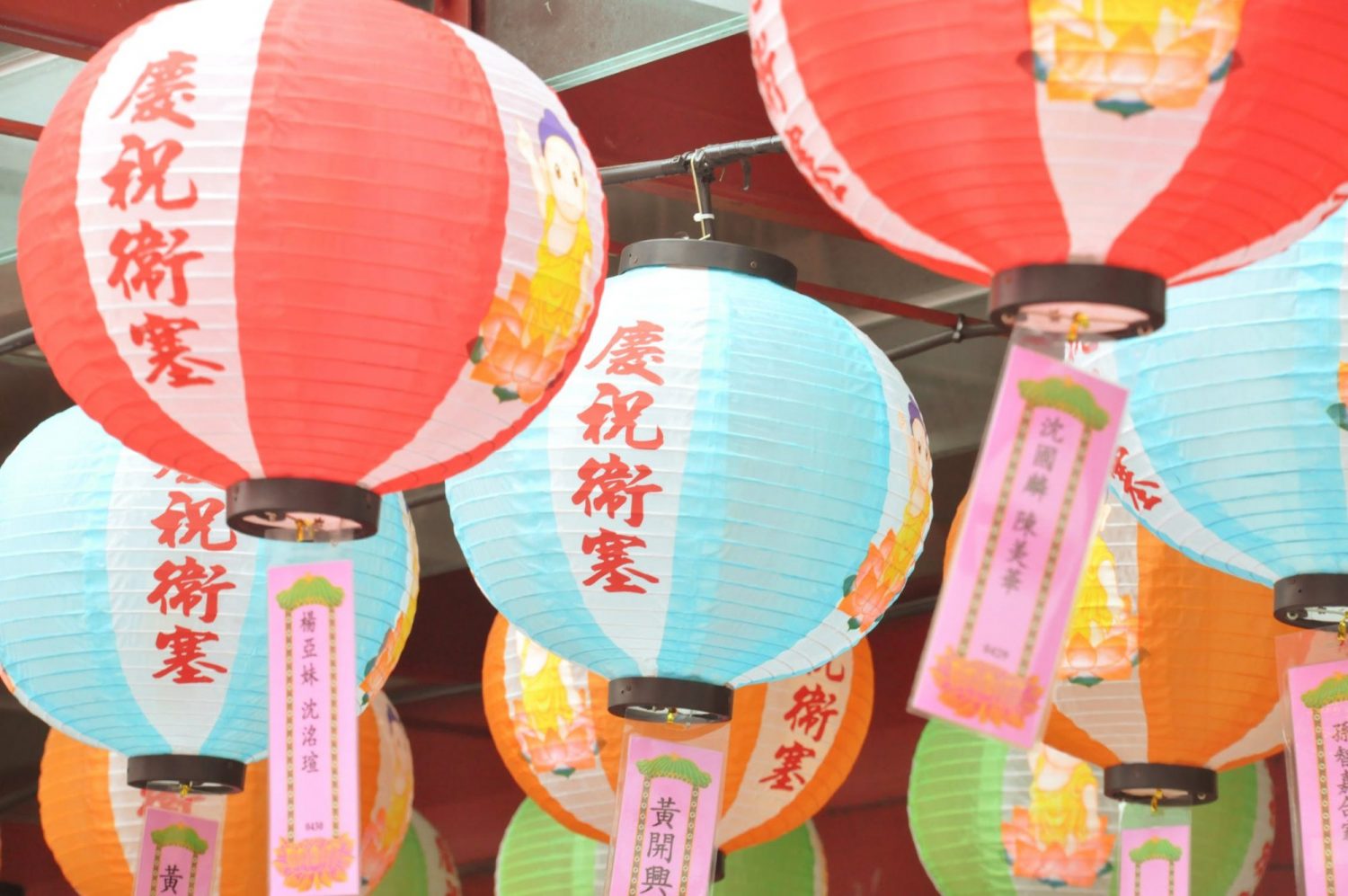 Happy Chinese New Year! The Year of the Snake begins on Wednesday 29th January 2025. The snake is associated with wisdom, strategic planning and intuition in Chinese culture. This enigmatic creature should imbue your EFL teaching learning and teaching with goal-focused diligence this year. Chinese tradition dictates that 2025 will be filled with effective progress, along with a touch of witty humour!
Happy Chinese New Year! The Year of the Snake begins on Wednesday 29th January 2025. The snake is associated with wisdom, strategic planning and intuition in Chinese culture. This enigmatic creature should imbue your EFL teaching learning and teaching with goal-focused diligence this year. Chinese tradition dictates that 2025 will be filled with effective progress, along with a touch of witty humour!
The Chinese New Year is a great time for a seasonal EFL lesson. Learning about other cultures and traditions is always interesting and a great way to learn more English, so we’ve prepared a fun comprehension exercise for your next EFL lesson relating to Chinese New Year!
The Chinese Year of the Snake in EFL
As an EFL student, the characteristics of the snake should help you with its intelligent and carefully planned approach to pursuing new goals.
This positive snake characteristic should help you feel a strong sense of commitment to your studies and encourage a responsible approach to learning this year. You might want to use the snake’s determined approach and excellent memory to take on new challenges and try using more difficult aspects of the language.
You could take advantage of this year’s wise snake vibe to develop a timetable for study, as snakes are always keen to adapt their methods to suit a new project.
The snake’s ability to transform itself by shedding its skin means you might also feel a powerful sense of leaving behind the old study habits and embracing new challenges and big changes.
The snake’s wisdom means that other students might also seek you out for help. You could join other learners by finding a penpal or language exchange buddy and practising together.

The snake is goal-orientated, intuitive and intelligent – image source
However, the snake can be cynical and pessimistic, so might not always be the most positive study companion. Snake teachers should also be careful to ensure criticism is constructive for the student.
Snake tendencies could mean you are more likely to pursue your favourite areas of study due to a perfectionist streak and a desire to only reveal your strengths. It’s important to remember to study areas of difficulty too, such as false friends and words with tricky pronunciation.
Be careful to take extra care over confusing words for EFL learners during 2025, so the negative snake characteristics don’t undermine your progress.
For teachers, the Year of the Snake might bring up some critical tendencies, as the snake personality can sometimes find it hard to accept mistakes. To overcome this, remember to give students plenty of scope to explore the learning methods that suit them and give constructive feedback if they make mistakes. Students should receive encouragement to try out new words and structures.
Try to take advantage of the strategic and goal-orientated side of the snake’s character and foster its natural attraction to closely detailed work. These useful snake traits will help you to support students with their language learning goals throughout the year.
EFL Lesson Plans for Chinese New Year
Chinese New Year is a great time for developing some interesting learning materials, especially using comprehension exercises.
Comprehension exercises are a useful way to help students with all their English language skills – reading, listening, writing and speaking.
The target text can be presented written down for reading practice and also read aloud for EFL listening practice.
Afterwards, the students can answer questions or fill in the blanks to practice writing skills, then read their final text aloud to practice speaking in English.
So let’s learn a bit more about the traditions of the Chinese New Year:
EFL Comprehension Exercise for Chinese New Year
The Chinese New Year is a very important Chinese holiday as traditionally it is a time to honour one’s ancestors and the gods. This traditional Chinese festival is also called the Lunar New Year and the Spring Festival.
Chinese New Year’s Day begins on the first day of the first lunar month in the Chinese calendar.
The exact day that Chinese New Year’s Day falls will change every year because of the variations in the Chinese zodiac, but it always falls on a day between 21st January and 20th February.
At Chinese New Year, children are traditionally given money in red paper envelopes as presents from relatives and red lanterns are hung in people’s houses.
There are also many street parties with loud, brightly coloured fireworks. The celebrations continue until Lantern Day, on the 15th of the first lunar month of the new year.
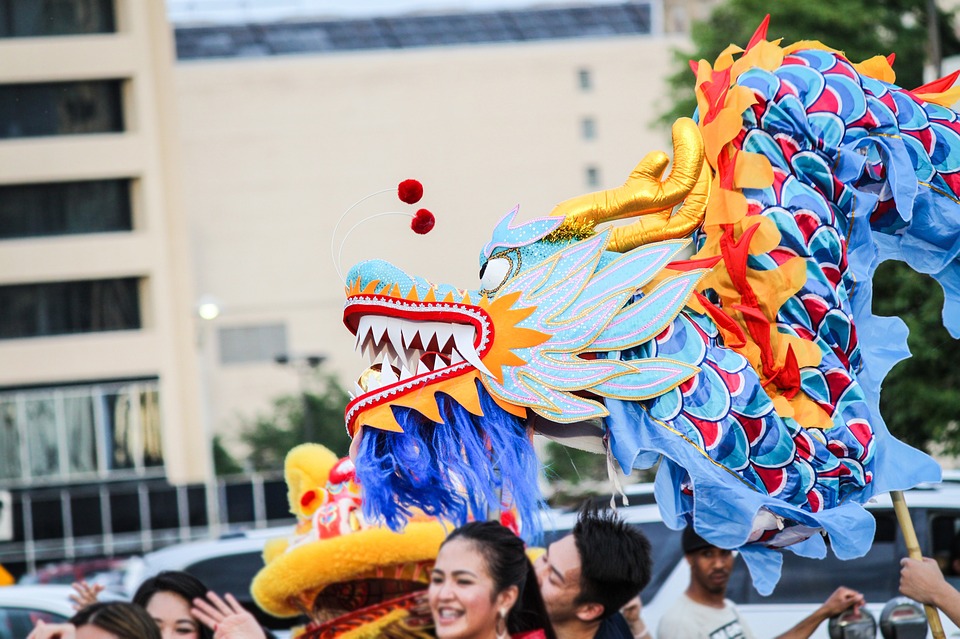
The dragon dance is an important Chinese New Year tradition. This colourful artistic performance symbolises the bringing of good luck and prosperity – Image source
Chinese New Year Traditions
Cleaning
Traditionally, Chinese people spring clean their houses on the evening before Chinese New Year’s Day. This is so that they can prepare their homes for the incoming good luck that the New Year will bring.
Decorations
Homes are decorated with red lanterns and colourful banners displaying messages of luck and good wishes for the new year.
Fireworks
Magnificent displays of fireworks light up the sky at midnight for many Chinese people. This tradition began as a way to scare away the mythical monster Nian, which is said to appear at that time!

Fireworks at Singapore harbour to celebrate Chinese New Year – image source
Flowers
Certain flowers are popular at Chinese New Year time, such as orchids, peonies, peach blossoms and narcissus.
Orchids are known as fertility flowers, favoured for their image of luxury and refinement and these flowers are often given as presents.
Narcissus is a symbol of good fortune in Chinese culture, so this flower is also highly popular at Chinese New Year.
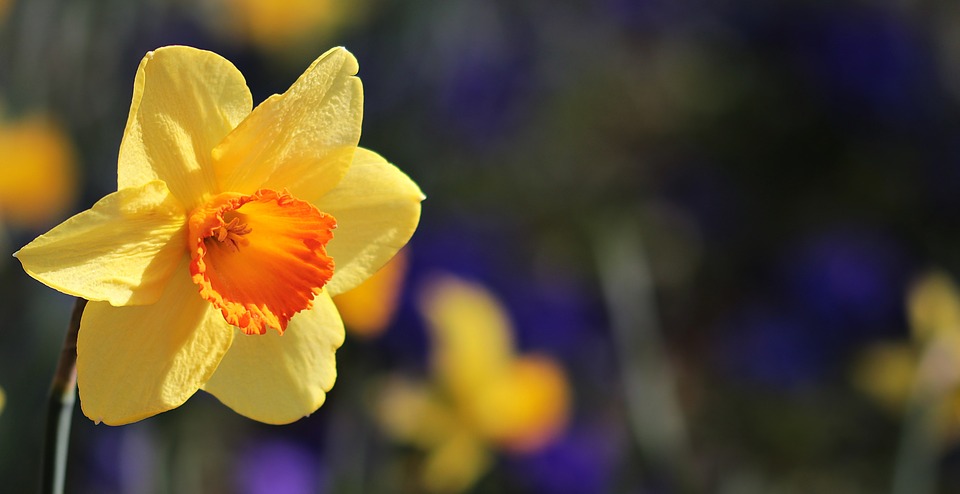
Narcissus is a popular flower at Chinese New Year – image source
Lucky foods
People gather with friends and family to feast on special lucky meals at Chinese New Year, incorporating not only lucky foods but also lucky methods of food preparation and ways of eating.
Lucky foods include fish, spring rolls, dumplings and nian gao (sweet, sticky rice cakes). The sweet rice cake symbolises the personal growth we should aim for each year.
Other popular foods at Chinese New Year include long noodles (‘longevity’ noodles) and orange or golden coloured fruit (‘good fortune’ fruit), such as oranges.
EFL ‘Fill the Gaps’ Exercise for Chinese New Year:
Chinese New Year is a very important Chinese ________1________. This time of year is also called the Lunar New Year or ________2________.
Chinese New Year’s Day begins on the _______3_________ day of the first lunar month in the Chinese calendar. The 15th day of the first lunar month is called _____4___________. The exact date of Chinese New Year’s Day_______5_______ every year because of Chinese zodiac.
One of the ______6__________ on Chinese New Year’s Day is that you should _________7_______ your house, so you will prepare your home for the good luck of the year ahead, while many people also _________8_______ their homes with colourful banners.
Children traditionally receive ________9________ as presents on this day and red lanterns are hung in people’s ________10________. To celebrate Chinese New Year people hold _________11_______ in the streets and let off brightly coloured, noisy ________12________.
People eat special foods at Chinese New Year, such as _______13_______ fruit, which the Chinese call ‘good fortune’ fruit. Other popular foods include nian gao, which are sweet sticky _______14_______.They also give flowers as gifts, such as narcissus, which is known as a symbol of _______15_______.
Answers:
1. holiday, 2. Spring Festival, 3. first, 4. Lantern Day, 5. changes / moves / alters, 6. traditions, 7. clean, 8. decorate, 9. money in red paper envelopes, 10. homes/houses, 11. parties, 12. fireworks, 13. orange or golden coloured, 14. rice cakes, 15. luck / good fortune
There are many more exercises you can create for EFL students using the Chinese New Year as a theme.
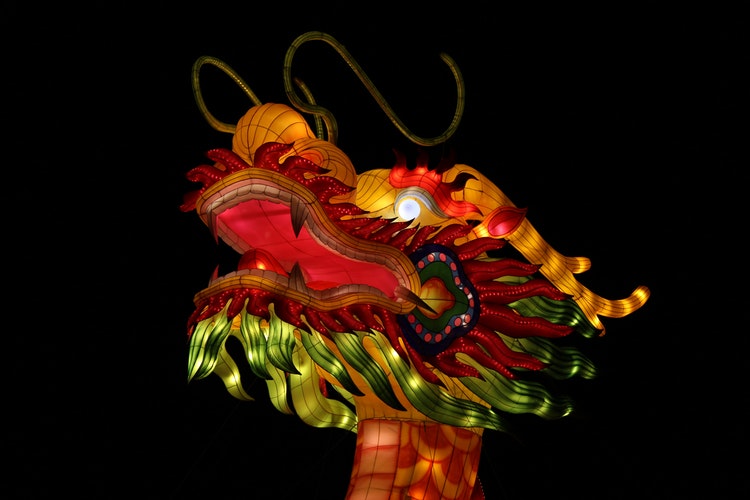
The dragon is a symbol of power, strength and luck in Chinese culture Image source
Some more ideas would be a ‘choose the right word’ exercise where instead of gaps, there are two options of words the student could use – one is correct and one is incorrect.
This ‘true or false’ exercise is a great way for students to improve English vocabulary knowledge as it gives them a simple test, while keeping the words in context.
Other ideas include correcting scrambled sentences and matching two halves of a sentence. All the exercises should use the main text as a starting point.
Students could also ask each other questions about the text, orally or as a written exercise. This can be done in pairs, small groups or as a whole class.
The Chinese Zodiac
Most people are familiar with the Western zodiac and some of you may check your horoscopes, but not everyone is familiar with the Chinese zodiac.
In Chinese culture, each year corresponds to one of the twelve different animals in the zodiac: rat, ox, tiger, rabbit, dragon, snake, horse, sheep, monkey, rooster, dog and pig.
Below is a zodiac wheel featuring all the animals and their corresponding years. The Chinese New Year starts each year at some point between 21st January and 20th February, so if your birthday is between these dates, it could be different from the chart.
For example, if you were born anytime after 20th February during 1980, your animal is the Monkey. If you were born before 21st January in 1980, your animal will be from the year before, which is the Sheep (this year is sometimes called the Goat).
Each animal in the Chinese Zodiac has different characteristics. For example: Sheep are intelligent, gentle and studious, while Rats are charming, sociable and artistic; Horses are courageous and adventurous, while Roosters are honest, intelligent and confident.
All the animals also have negative character traits, such as the pettiness of the Ox, the jealousy of the Rat, the pessimism of the Pig and the vanity of the Rooster.
These Chinese zodiac animals can form another part of the EFL lesson for Chinese New Year. For example, students can work out their own Chinese animal and learn the character traits associated with them.
This is a good way to discuss vocabulary related to characteristics and personalities, both positive and negative.
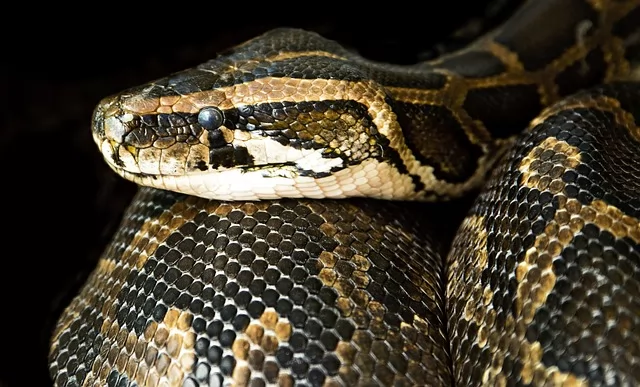
The snake is elegant and wise, but can also be critical and pessimistic – image source
Chinese New Year Parades
Chinese New Year is always an exciting time and the London Chinese New Year parade is always a huge attraction filled with dancing, music and bright costumes.
This parade is the biggest Chinese New Year parade in Europe and people can be sure of a wonderful, vibrant and eventful celebration.
The parade normally starts at 10am with colourful parade floats and dragon dances moving along Charing Cross Road into Shaftesbury Avenue, before arriving in Chinatown. There is also a range of exiting cultural activities for all the family in Leicester Square and Trafalgar Square.
Chinese New Year during the Covid pandemic
In 2021 and 2022, the celebrations were much more muted because of the Coronavirus pandemic, which meant some activities were cancelled. However, we could still enjoy the occasion in a quieter way at home with traditional Chinese food, decorations and presents.
The main London parade usually features the ‘dragon dance’, the ‘flying lion dance’, a variety show, comedy, acrobatics, martial arts, opera, live performances and fireworks.
During the pandemic, many people danced in their homes, on balconies, in gardens and via video chats around the world!
For those looking to create an EFL lesson themed on Chinese New Year, it would be interesting for students to explore the area of Chinatown in London by reading about its history and discussing it as a group.
This could be a good time to show a video of the costumes, music, dancing and traditional parades of the New Year festival, along with some of the more exotic elements, such as acrobatics and martial arts.
As the rabbit hops into 2023 to promise us a year filled with steady academic progress, there are practically limitless ways you can incorporate Chinese New Year in the EFL classroom!

The Year of the Snake is seen as a time for strategic planning and goal setting – image source
How will you celebrate the Chinese Year of the Snake?
Do you celebrate Chinese New Year?
Teachers, what lesson plans or ideas do you have for Chinese New Year?
Will you be organising any remote Chinese New Year celebrations this year?
Chinese readers, do let us know about your first-hand experiences of Chinese New Year – we’d love to learn more about your festival.
What foods do you eat at this time? Do you give any presents?
Share your ideas, thoughts, plans and experiences in the comments box!

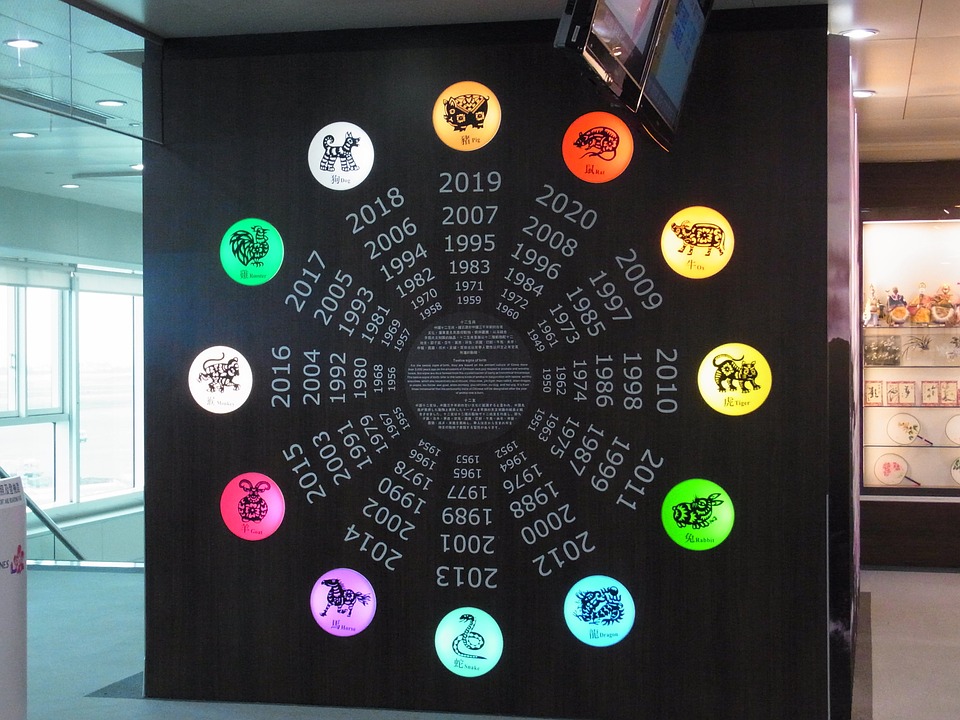
Really useful lesson ideas, thanx!
Hi Mel,
Thanks for your comment – I’m glad you enjoyed the post. Have a great Chinese New Year!
Best wishes,
Catherine